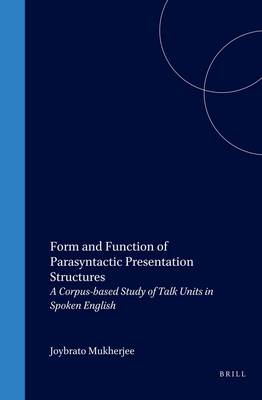
- Afhalen na 1 uur in een winkel met voorraad
- Gratis thuislevering in België vanaf € 30
- Ruim aanbod met 7 miljoen producten
- Afhalen na 1 uur in een winkel met voorraad
- Gratis thuislevering in België vanaf € 30
- Ruim aanbod met 7 miljoen producten
Zoeken
Omschrijving
This study investigates prosody-syntax interactions from a functional perspective and based on authentic corpus data. Drawing on Halliday's well-known interpretation of the tone unit as an information unit, Halford's idea of a prosodically and syntactically defined talk unit and Esser's concept of abstract presentation structures, a modified talk unit model is developed. The talk unit is built up of one to many tone unit(s). The focus of both the quantitative and the functional analysis is on the interplay between prosodic status and syntactic status at tone unit boundaries by means of which talk units as parasyntactic units are established. The database is provided by a sample of about 50,000 words mainly taken from the London-Lund Corpus of Spoken English. The findings reveal that speakers have at their disposal and make use of prosody-syntax interactions in order to structure information effectively and to allow for or facilitate turn taking. This volume is not only of interest for corpus linguists, but for functionalists in general and intonationists in particular. In analysing the stylistic and pragmatic potential of talk units and applying corpus linguistic methodology, this study breaks new ground with regard to functional and empirical approaches to spoken English.
Specificaties
Betrokkenen
- Auteur(s):
- Uitgeverij:
Inhoud
- Aantal bladzijden:
- 172
- Taal:
- Engels
- Reeks:
- Reeksnummer:
- nr. 35
Eigenschappen
- Productcode (EAN):
- 9789042012950
- Verschijningsdatum:
- 1/01/2001
- Uitvoering:
- Hardcover
- Formaat:
- Genaaid
- Afmetingen:
- 155 mm x 230 mm
- Gewicht:
- 430 g

Alleen bij Standaard Boekhandel
+ 216 punten op je klantenkaart van Standaard Boekhandel
Beoordelingen
We publiceren alleen reviews die voldoen aan de voorwaarden voor reviews. Bekijk onze voorwaarden voor reviews.








